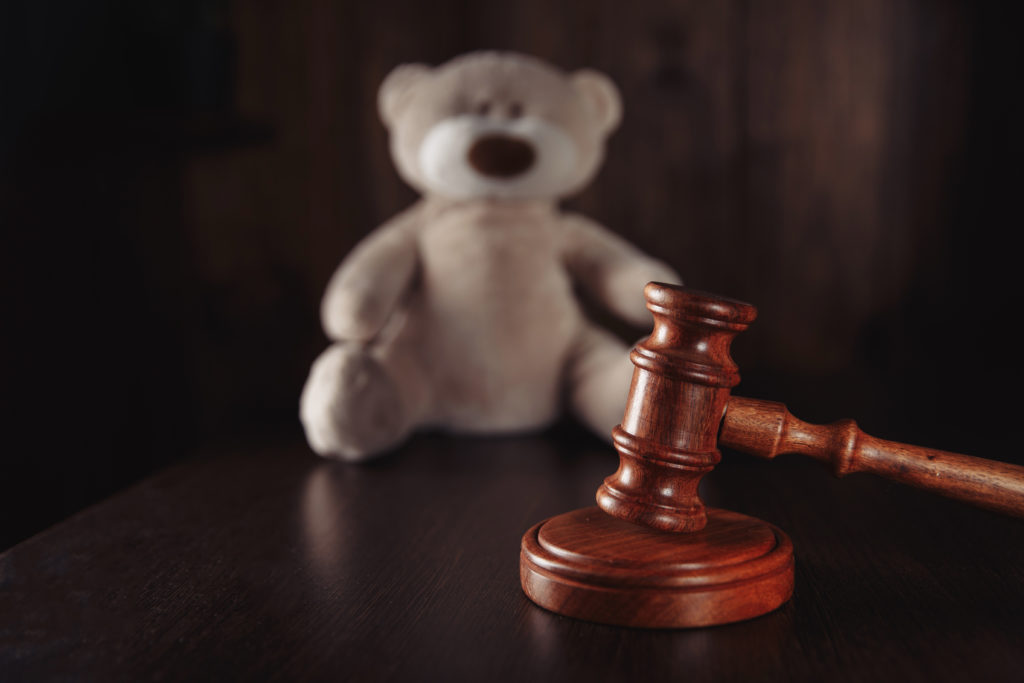Juvenile law is a complex and multifaceted area of legal practice that addresses the intersection of the legal system with the unique needs and circumstances of minors. It navigates the delicate balance between protecting the rights and well-being of young individuals and holding them accountable for their actions. From delinquency and criminal responsibility to child welfare and protection, understanding and respecting juvenile law is crucial for building healthy societal foundations.

Minors and law
Legal issues impacting minors encompass a diverse array of concerns, with family law and education law bringing particularly pivotal domains. At the same time, juvenile delinquency usually brings minors into direct contact with legal systems, but from a different perspective.
Family law
The fundamental principles of family law focus on the protection, upbringing, and best interests of all parties concerned, especially the children. (Aguilar, 2024). Within family law, issues like custody battles, adoption procedures, and parental rights profoundly influence minors’ lives.
As an illustration, in the US, 50% of children experience the divorce of their parents (Lindner, 2023). This statistic alone is enough to indicate the importance of family law in terms of protecting children’s best interests.
Similarly, adoption laws outline the complex process by which individuals or couples can legally adopt a child, ensuring the welfare of both birth parents and adoptive families, but primarily that of the children (Aguilar, 2024). Finally, parental rights encompass a spectrum of responsibilities and privileges which are at the forefront of safeguarding minors’ well-being, ranging from decision-making authority to financial support.
Education law
Education law plays an important role in protecting minors’ rights to access quality education and addressing issues such as discrimination and bullying. Legislation guarantees equal educational opportunities for all children, irrespective of background or circumstances (United Nations, n.d.). However, it must be noted that, in practice, over 200 million children are not able to practice their right to education for various reasons (Unesco, 2023).
One prominent example of a country in which the right to education is seriously endangered is Nigeria, with a substantial number of children being deprived of their right to education due to a range of socio-economic and security challenges. It is estimated that over 10 million children who should be enrolled in primary education have been out of school (National Bureau of Statistics, 2021).
Factors contributing to this alarming statistic include widespread poverty which forces children into labor to support their families instead of attending school. Additionally, insecurity in regions like the Northeast has led to the destruction of schools and the displacement of the local population, severely disrupting educational access and contributing to the disparity between the reality and regulations underlining the right to education as a basic right all children are entitled to.
Delinquency
Delinquency brings minors into contact with the legal system, prompting consideration of the court process and legal representation tailored to young people. When minors engage in delinquent behavior, they navigate a distinct legal process that should prioritize rehabilitation over punishment.
Juvenile courts seek to address the underlying causes of delinquency while holding minors accountable for their actions through various interventions. Legal representation for young people is of utmost importance during these proceedings, ensuring their rights are protected and their voices heard. Attorneys specializing in juvenile law should advocate for minors’ interests, guiding them through the legal process and advocating for outcomes that prioritize their well-being and future prospects (Kraut, n.d.).
The foundation of child rights protection

The UN Convention on the Rights of the Child (CRC) stands as the most comprehensive international treaty addressing the rights of children, setting out a framework for the protection, provision, and participation rights of children worldwide. Adopted by the United Nations General Assembly in 1989, the CRC outlines the fundamental rights that should be afforded to every child, regardless of their background or circumstances.
The CRC recognizes the inherent dignity and the equal and inalienable rights of all members of the human family, underscoring its universal applicability and importance in safeguarding children’s rights (United Nations, 1989). It serves as a guiding framework for governments, policymakers, and organizations worldwide, providing a blueprint for laws, policies, and practices aimed at ensuring the well-being and rights of children.
Four fundamental principles of children’s law
In juvenile law, four fundamental principles guide the framework for protecting and promoting the rights and well-being of children. The right to be heard underscores the importance of recognizing children as active participants in decisions that affect their lives and is stipulated in Article 12 of the CRC (Child Rights International Network, 2019).
It emphasizes that children have the right to express their views freely and that these views should be given due weight according to their age and maturity. This principle acknowledges the agency and autonomy of children, ensuring that their voices are heard and respected in legal matters affecting them.
When the CRC was adopted to protect children’s rights in general, the principle of non-discrimination was well placed among the guaranteed rights of the child in Article 2 of the Convention. Non-discrimination is a foundational principle that emphasizes the equal rights and protection of all children, regardless of their background, identity, or circumstances. It prohibits discrimination based on factors such as race, ethnicity, gender, disability, religion, or socioeconomic status and requires measures to ensure equality of opportunity and access to resources for all children (Besson, 2005).
The best interest principle focuses on prioritizing the well-being and interests of children in all actions and decisions affecting them (United Nations, 2013). It requires decision-makers to consider various factors, including children’s safety, health, emotional and psychological needs, and cultural background, to determine the course of action that will most effectively promote their overall development and welfare. This principle is enshrined in the CRC, namely Article 3, which stipulates that the best interest of the child should be a primary consideration in all actions concerning children.
The right to an adequate life, stipulated in Article 27 of the CRC, entails the principle of guaranteeing the necessary conditions for children’s development and well-being, including access to food, shelter, healthcare, education, and a safe and nurturing environment. Children have the right to a standard of living adequate for their physical, mental, spiritual, moral, and social development.
Juvenile justice
From a certain age, depending on the country, children, even though still minors, can be considered legally responsible for their actions. The minimum age of criminal responsibility usually varies from twelve to sixteen years, with the exception of certain countries such as Bhutan or Brunei, where the minimum age is ten and seven years, respectively (Child Rights International Network, 2013).
The aim of the juvenile justice system is to operate with a distinct focus on rehabilitation rather than punishment, recognizing the unique vulnerabilities and developmental needs of young offenders (Schweitzer & Davidian, 2023). Theoretically, it aims to address the underlying factors contributing to delinquent behavior and to support the rehabilitation and reintegration of juvenile offenders into society. Many juvenile offenders can be effectively rehabilitated through targeted interventions, such as counseling, education, and community-based programs, which address the root causes of their behavior and promote positive development.
Upon arrest, minors may be detained or released into the custody of their parents or guardians, depending on the severity of the offense and other relevant factors. However, it must be noted that estimates show that every year, at least 410,000 children are being held in pre-trial detention centers and prisons, indicating that detention as part of the administration of justice is grossly overused (UN General Assembly, 2019).
Improving the situation in the field
Major improvements in the area of juvenile law require a systematic approach and well-orchestrated collaboration of all relevant entities, including governments, legal professionals and institutions, as well as NGOs and individuals.
Governments can introduce and implement comprehensive child protection laws and policies. For instance, in 2021, the Indian government amended the Juvenile Justice (Care and Protection of Children) Act to ensure better protection for children in institutional care and to streamline the adoption process, thus providing safer environments for vulnerable youth (Ministry of Law and Justice, Government of India, 2021).
Legal professionals such as attorneys and lawyers, can enhance the situation by offering pro bono services, representing children in legal proceedings, and advocating for policy reforms, while courts can contribute by adopting child-sensitive procedures and ensuring that children’s best interests are prioritized in judicial decisions. The establishment of specialized family courts in countries like Australia has improved the handling of cases involving children, focusing on welfare and rehabilitation rather than punitive measures (Federal Circuit and Family Court of Australia, 2024).

NGOs are another key entity in advocating for children’s rights and providing essential services. They have been instrumental in lobbying for stronger child protection laws and supporting educational programs worldwide.
However, it is necessary to mention that they have been driven by individuals who support these organizations through volunteering, financial donations or fundraising activities, enabling them to expand their programs and reach more children in need. Additionally, community leaders and volunteers can make a difference by mentoring youth, supporting local child welfare initiatives, and raising awareness about children’s rights. Together, these efforts create a supportive legal framework that ensures the well-being of children worldwide.
Written by Zeljka Mazinjanin
Internally proofread by Aditi Partha
Last updated on June 19, 2024
Bibliography:
Aguilar Matthew (2024), Family Law: Basic Principles For Domestic Relations. Retrieved from Lexinter Law Directory, available at https://www.lexinter.net/law/family, accessed on May 1, 2024.
Besson Samantha (2005), The Principle of Non-Discrimination in the Convention on the Rights of the Child. Retrieved from The International Journal of Children’s Rights, available at https://core.ac.uk/download/pdf/20656988.pdf, accessed on May 1, 2024.
Chancellor of Justice (n.a), Children’s and youth rights and responsibilities. Retrieved from Oiguskantsler Chancellor of Justice, available at https://www.oiguskantsler.ee/en/children%E2%80%99s-and-youth-rights-and-responsibilities, accessed on May 1, 2024.
Child Rights International Network (2019), Right to be heard. Retrieved from Child Rights International Network, available at https://archive.crin.org/en/guides/users-guides/guides-practitioners/guide-ngos/right-be-heard.html, accessed on May 1, 2024.
Child Rights International Network (2013), Inhuman sentencing of children in Brunei Darussalam. Retrieved from Child Rights International Network, available at https://archive.crin.org/en/library/publications/brunei-darussalam-upr-submission-inhuman-sentencing-children.html, accessed on May 1, 2024.
Federal Circuit and Family Court of Australia (2024), Family law changes from 6 May 2024. Retrieved from Federal Circuit and Family Court of Australia, available at https://www.fcfcoa.gov.au/news-and-media-centre/fla2023, accessed on May 1, 2024.
Georgetown Law (n.d), Child Advocacy/Juvenile Justice. Retrieved from Georgetown Law, available at https://www.law.georgetown.edu/your-life-career/career-exploration-professional-development/for-jd-students/explore-legal-careers/practice-areas/child-advocacyjuvenile-justice/, accessed on May 1, 2024.
Kraut e. Michael (n.d.), Juvenile Offenses. Retrieved from Child Crime Prevention and Safety Center, available at https://childsafety.losangelescriminallawyer.pro/juvenile-offenses.html, accessed on May 1, 2024.
Lindner Jannik (2023), Must-Know Divorce Custody Statistics. Retrieved from Gitnux, available at https://gitnux.org/divorce-custody-statistics/, accessed on May 1, 2024.
National Bureau of Statistics (2021), 2020 Statistical Report on Women and Men in Nigeria. Retrieved from Premium Times, available at https://www.premiumtimesng.com/news/headlines/483619-special-report-kano-akwa-ibom-eight-other-states-housed-most-of-nigerias-out-of-school-children.html?tztc=1, accessed on June 19, 2024.
Ministry of Law and Justice, Government of India (2021), The Juvenile Justice (Care and Protection of Children) Amendment Bill, 2021. Retrieved from PRS Legislative Research, available at https://prsindia.org/billtrack/the-juvenile-justice-care-and-protection-of-children-amendment-bill-2021, accessed on June 19, 2024.
Schweitzer & Davidian (2023), Rehabilitation vs. Incarceration: What Works Best for Juvenile Offenders in California? Retrieved from Schweitzer & Davidian Professional Corporation, available at https://www.avoidjail.net/blog/2023/july/rehabilitation-vs-incarceration-what-works-best-/, accessed on May 1, 2024.
Unesco (2023), Why is it important to have the right to education formally enshrined in law and other instruments? Retrieved from Unesco, available at https://www.unesco.org/en/right-education/need-know, accessed on May 1, 2024.
United Nations, (n.d.), About the right to education and human rights. Retrieved from United Nations, Human Rights, Office of the High Commissioner, available at https://www.ohchr.org/en/special-procedures/sr-education/about-right-education-and-human-rights, accessed on May 1, 2024.
United Nations (1989), Convention on the Rights of the Child. Retrieved from United Nations, Human Rights, Office of the High Commissioner, available at https://www.ohchr.org/en/instruments-mechanisms/instruments/convention-rights-child, accessed on May 1, 2024.
United Nations (2013), General comment No. 14 (2013) on the right of the child to have his or her best interests taken as a primary consideration (art. 3, para. 1). Retrieved from United Nations Committee on the Rights of the Children , available at https://www2.ohchr.org/english/bodies/crc/docs/gc/crc_c_gc_14_eng.pdf, accessed on May 1, 2024.
UN General Assembly (2019, July 11). Global study on children deprived of liberty. Retrieved from UN Digital library, available at https://digitallibrary.un.org/record/3813850?v=pdf, accessed on May 1, 2024.

